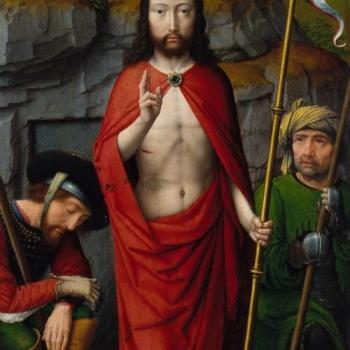Pete Vere pointed this out to me. It’s the interesting structure of the Noah narrative:

The reason it interests me is that the sacred author uses a similar technique in Exodus. It has the effect of placing what the author want you to see (in this case, the core lesson that God did not forget Noah and the rest of his creation) within a sort of nesting set of parentheses which parallel each other before and after the central point.
In Exodus, you get a long and entertaining narrative about the oppression in Egypt, the ten plagues, the Passover, the escape from Egypt, and the giving of the Ten Commandments.
And then everything stops and get super boring as chapter after chapter crawls by with long elaborate instructions how to build the tabernacle, and make the Ark of the Covenant, and Aaron’s priestly robes. Then, the story kicks back in and you get the narrative of the Golden Calf. Then, it returns to telling you that “we made the Tabernacle, the Ark, and Aaron’s robes just the way God told us to do it.
And that’s where it ends. What gives?
The point is the same as the structure of the Noah account. The instructions about the cult sacrificial furniture, Ark, and priestly garments are the first set of nesting parentheses. The account of the making of all these things is the second set of nesting parentheses. And in the middle? The story of the sin of the Golden Calf. What the Fall of Man is in Christian theology is something like what the sin of the Golden Calf is in the theology of Exodus. The great primal sin of Israel, and the emblematic and archetypal betrayal of God by his people. The whole priestly system prescribed for Israel and surrounding that massive sin is there as a reminder of that sin–and of God’s provision to forgiven and care for Israel despite that sin.











